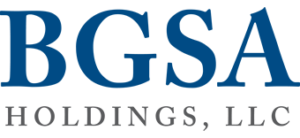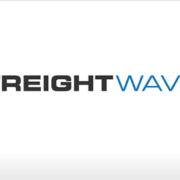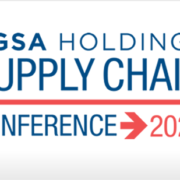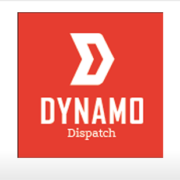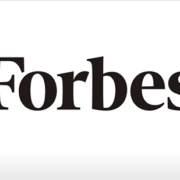Highlights from the BGSA Supply Chain Conference
Every January, we have the pleasure of hosting more than 200 CEOs and leaders of transportation, logistics, supply chain and technology companies at the Breakers in Palm Beach. The annual BGSA Supply Chain conference has become a great way to learn about the big trends and opportunities shaping the industry.
So what did we learn in Palm Beach this year? I’ll post the highlights. You can also see additional details at the BGSA 2017 conference site.
In sum, we see three key themes in particular: the Trump Bump, the power of e-commerce, and consolidation.
The Trump Bump
First, let’s start with the data.
At BGSA, we track the BGSA Supply Chain Index, which is a basket of 67 companies across nine segments, including logistics, trucking, rail, supply chain technology, and all other related segments.
The BGSA Supply Chain Index grew 16% in 2016, compared with a symmetrical 16% drop last year. The BGSA Supply Chain Index also outperformed the S&P 500, which increased by 11% this year. All in all, it was a strong year for our sector.
Within that market basket, here are some key highlights from 2016:
- LTL, which increased by 46%, led by SAIA (up 98%)
- Truckload, which increased by 36%, led by Swift Transportation (up 76%)
- Energy transportation, which increased by 31%, led by Trimac (up 119%)
Underperformers included healthcare distribution, which dropped by 20%, led by McKesson (down 29%)
What explains this strong year for the supply chain sector?
The first factor is the Trump Bump. Of the 16% gain in 2016, a whopping 10% came in the month of November. The market expects a Trump Administration to be bullish for transportation and logistics. This conclusion is based on several expectations, including (i) an increase in American manufacturing, (ii) the $1 trillion infrastructure spending announcement, and (iii) lower taxes. The biggest beneficiaries have been trucking companies, whose operating leverage gives them the ability to benefit from a boost in demand. Fellow conference attendees YRCW and ARCB, for instance, both spiked over 50% in the month of November alone.
The second factor is the alphabet soup of regulatory compliance. The Electronic Logging Device (ELD) mandate, which is slated to take effect in December 2017, will require all carriers to implement electronic recording of drivers’ Record of Duty Status (RODS), to ensure compliance with Hours of Service (HOS). Many small fleets and owner-operators lack this technology, and the market expects capacity to shrink. As a result, pricing is starting to increase.
The third factor is improving fundamentals in transportation and logistics. Across the board, Q4 2016 data reflects economic strengthening, and increases in both rates and volumes. In dry van trucking, spot market rates increased 5% year-over-year. In air freight, spot market rates increased 2%. In ocean freight, inbound container volumes increased 9%. Further, shipping rates have strengthened after the bankruptcy of Hanjin, with Transpacific Eastbound rates up 52%.
Going forward, we expect a strong 2017 for the industry as a whole.
The Power of e-Commerce
The second major theme driving change in the supply chain is e-commerce. 2017 may finally be the year in which logistics and e-commerce converge. Technology-based solutions for the last mile in particular are rapidly evolving.
In 2016, both Amazon and Uber announced they were targeting logistics. Uber declared an “Uber for Trucking” app, and made a $680 million acquisition of Otto to pursue self-driving trucks. Amazon also signaled plans for a logistics app and may become its own global freight broker and compete directly for business. More importantly, Amazon already spends over $15 billion on shipping, and has begun to build an Amazon logistics organization that could rival the Amazon Web Services (AWS) model.
Meanwhile, we are seeing a hothouse of innovation in tech-enabled logistics, including:
- Drones – with commercial deliveries for Amazon, 7-Eleven, and Maersk already underway
- Online freight booking – including disruptors like Freightos, 10-4, and uShip
- eCommerce fulfillment – with $2 trillion of annual sales and 15% annual growth, eCommerce customers are driving demand for faster and faster fulfillment, leading to same-day and even same-hour logistics solutions from companies like Amazon Prime Now, UberRUSH, Grand Junction, Doorman, and Bringg
These innovations are only going to accelerate. Logistics technology attracted over $5 billion of funding in 2016. This includes deals like:
- Chinese logistics: ZTO
- Tracking technology: Macropoint
- Distributed warehousing: Flexe
- TMS: 3Gtms
- Last-mile logistics: Bringg
- Visibility: project44
- And more
These technological changes pose both threats and opportunities. On the one hand, truck brokerage stocks like CHRW and ECHO dropped nearly 10% the week Uber and Amazon’s brokerage apps were disclosed. On the other hand, smart supply chain companies are making investments to ensure they will be ahead of the curve. For instance, the UPS Strategic Enterprise Fund has invested more than $400 million in disruptive technologies and businesses, ranging from drones to e-commerce fulfillment software.
We expect to see more transportation and logistics companies choose to make a portfolio of strategic investments in 2017.
Consolidation: The Party Continues
The third theme is consolidation. Amidst all of these positive catalysts, we are continuing to witness record M&A activity across all industry sectors.
Global transportation and logistics M&A volume remained strong, with over $120 billion worth of deals.
Major deals in 2016 included several global giants:
- US airlines: Virgin America Inc.’s $4.2 billion acquisition of Alaska Air Group Inc.
- Australian ports: Investor Group’s acquisition of Port of Melbourne Corp for $7.3 billion
- Chinese trucking: Dalian Dayang Trands’ acquisition of YTO Express for $8.8 billion
- Italian logistics: Cassa Depositi’s $3.3 billion acquisition of Poste Italiane
Meanwhile, middle-market M&A continued to dominate in the US, with a flurry of deals such as Pilot-ATL, Calyx-TransForce, UPS-Marken, Sunteck-TTS, and others.
All of these plot lines will continue to develop over the course of this year.
In summary, we are grateful for the ability to see so many terrific people and companies in one place.
Benjamin Gordon is Cambridge Capital CEO and BGSA Founder. Benjamin is a leading investor, advisor, and founder in technology, transportation, and logistics. For more information, follow Benjamin on Twitter, LinkedIn, Medium, his personal BenGordon PalmBeach blog, and his business BenjaminGordon blog.
